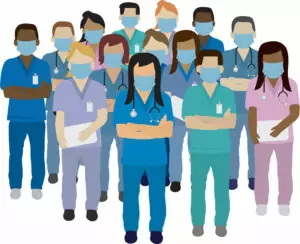Harassment is a serious problem that affects many children in schools. It can take many forms and cause a lot of mental and physical harm to the child. The school is supposed to be a safe place where children can learn and grow, but when harassment is present, it can cause a lot of damage to the child’s development. Therefore, it is important to create school environments that are free from harassment.

✅ AI Essay Writer ✅ AI Detector ✅ Plagchecker ✅ Paraphraser
✅ Summarizer ✅ Citation Generator
The first step in creating a school environment free from harassment is to educate students, teachers, and parents about what harassment is. Many students may not realize that their behavior is considered harassment, and they may not understand the harm it can cause. Therefore, it is important to teach them about the different types of harassment, such as verbal, physical, and cyber harassment. By educating students about harassment, they can learn how to recognize it and avoid it.
The second step is to have clear policies and procedures in place that address harassment. Schools should have a zero-tolerance policy for harassment and should clearly define what actions will be taken when harassment occurs. The school should also have a system in place for reporting harassment and should take all reports seriously. Teachers should be trained on how to handle harassment and should be aware of the school’s policies and procedures.
The third step is to create a positive school culture that promotes respect and kindness. Students should be encouraged to treat each other with respect and kindness, and the school should celebrate diversity. Teachers should model positive behavior and should reward students who exhibit positive behavior. By creating a positive school culture, students are less likely to engage in harassing behavior.
The fourth step is to provide support for students who have experienced harassment. Students who have experienced harassment may need counseling or other support to help them deal with the trauma. The school should have resources available for these students and should work with them to ensure their safety and well-being.
In conclusion, creating a school environment free from harassment is essential for the well-being and development of students. By educating students, having clear policies and procedures, creating a positive school culture, and providing support for students who have experienced harassment, schools can create a safe and nurturing environment for their students. It is important for all stakeholders, including teachers, parents, and students, to work together to ensure that harassment is not tolerated in schools.
You can find more Essay Topics in our weekly digest based on the real market data and research from A*Help.
FAQ
What is harassment in a school environment?
Harassment in a school environment can occur when an individual is subjected to unwelcome or offensive behavior that creates a hostile or intimidating environment. This can include verbal, physical, or electronic harassment, such as teasing, bullying, spreading rumors, or sexual harassment.
What are some examples of harassment in schools?
Examples of harassment in schools can include teasing or bullying based on race, gender, sexuality, religion, or disability status. It can also include sexual harassment, such as unwanted touching or comments, or cyberbullying through social media or other electronic means.
How can schools create an environment free from harassment?
Schools can create an environment free from harassment by implementing policies and procedures that address harassment, providing training to staff and students on how to recognize and report harassment, and taking swift action when incidents occur. It is also important to foster a culture of respect and inclusivity in the school community.
What should I do if I am being harassed in school?
If you are being harassed in school, you should report it to a teacher, counselor, or administrator as soon as possible. They can help you address the situation and take steps to stop the harassment. It is important to document any incidents of harassment and keep a record of any communication related to the situation.
What can parents do to support creating a harassment-free school environment?
Parents can support creating a harassment-free school environment by talking to their children about the importance of respect and inclusivity, encouraging them to report any incidents of harassment, and working with the school to ensure that policies and procedures are in place to address harassment. They can also advocate for anti-harassment initiatives in their community.
Follow us on Reddit for more insights and updates.





Comments (0)
Welcome to A*Help comments!
We’re all about debate and discussion at A*Help.
We value the diverse opinions of users, so you may find points of view that you don’t agree with. And that’s cool. However, there are certain things we’re not OK with: attempts to manipulate our data in any way, for example, or the posting of discriminative, offensive, hateful, or disparaging material.